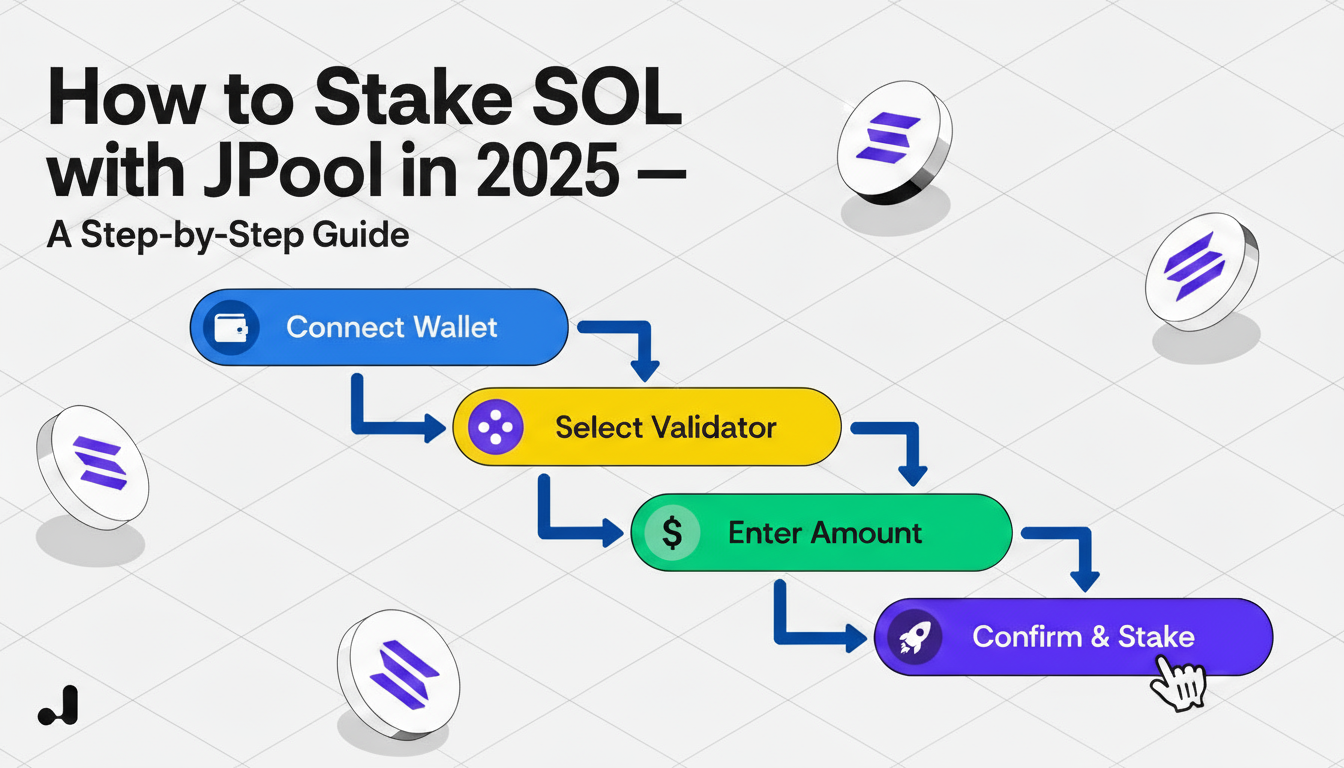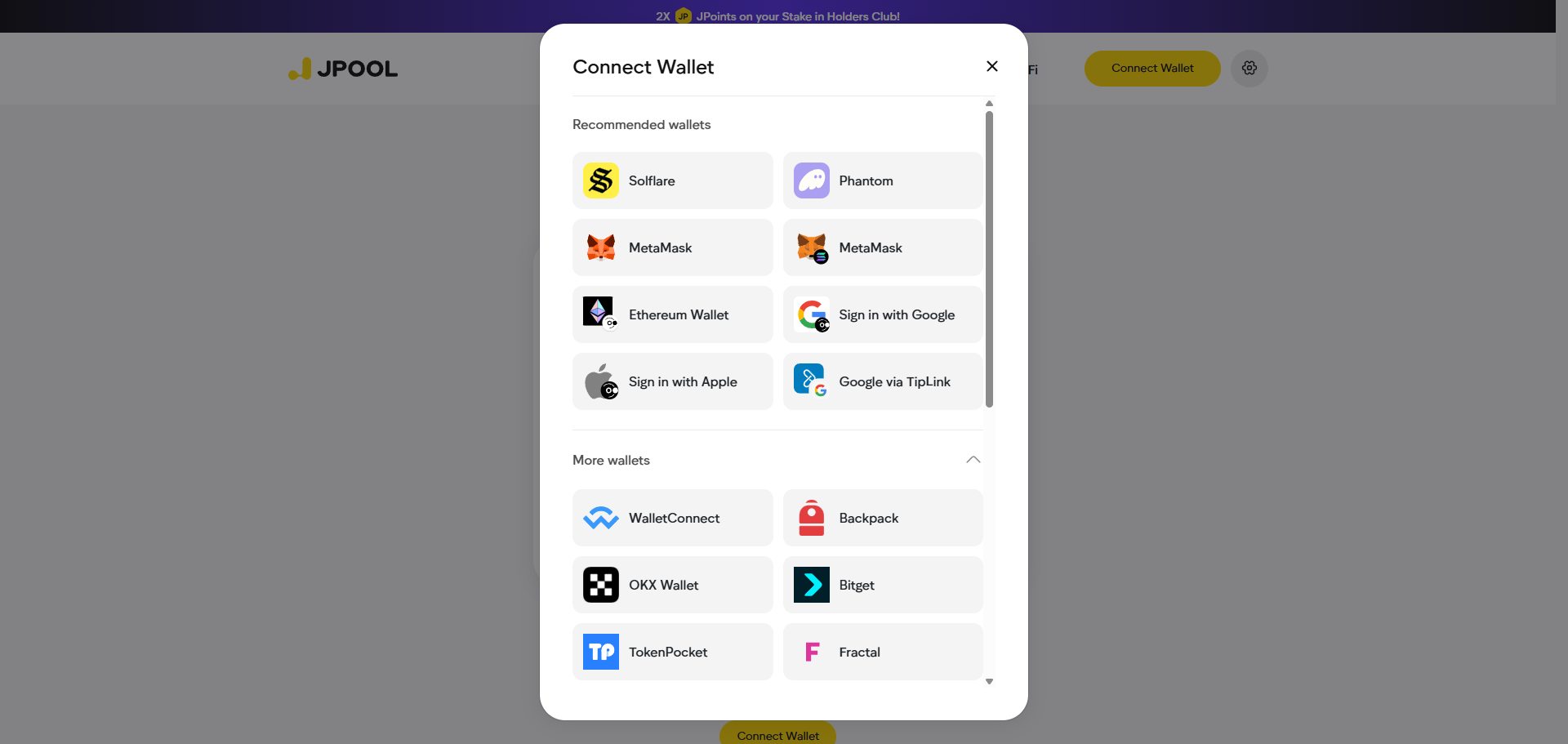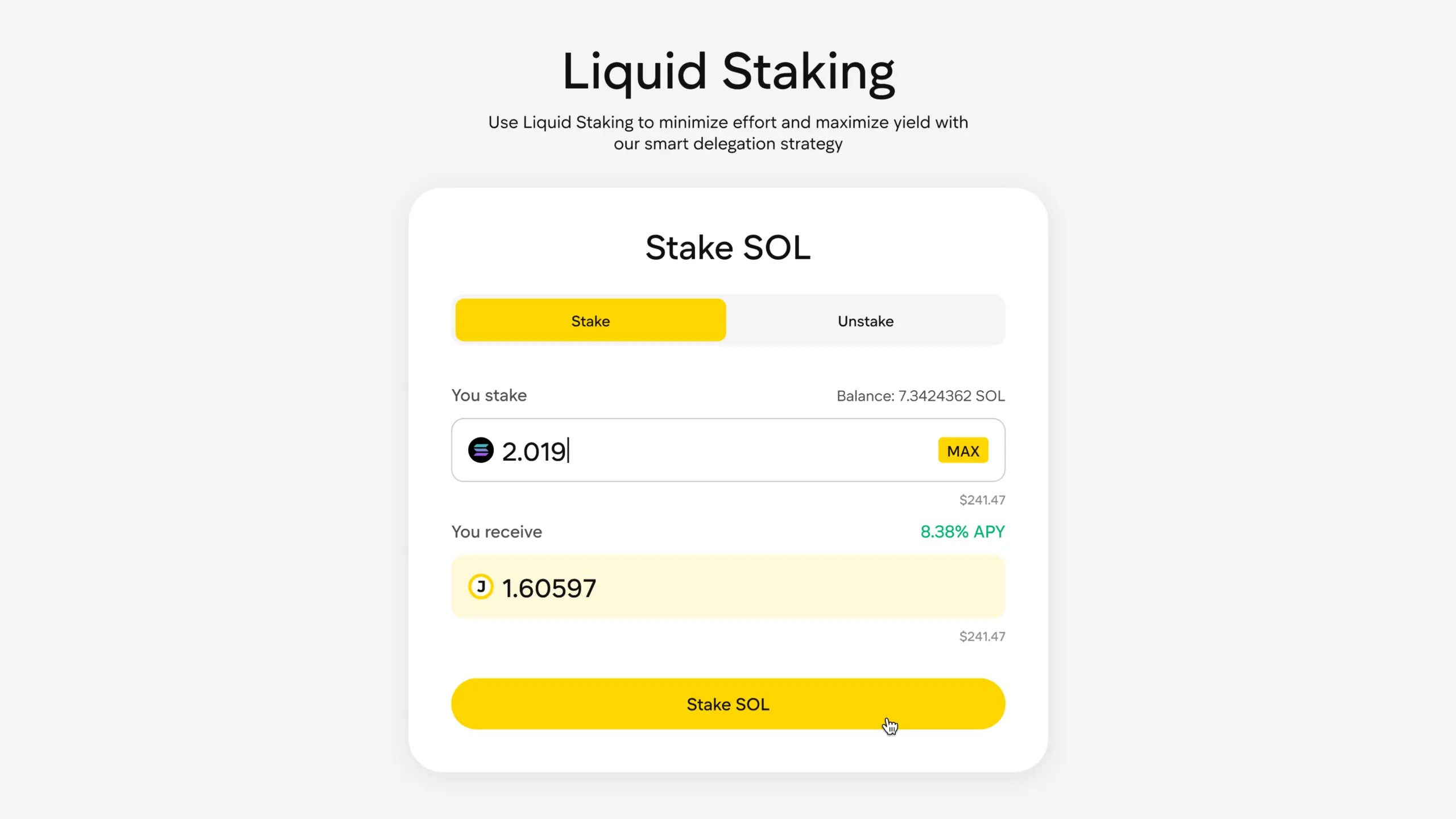How to Stake SOL with JPool in 2025: A Step-by-Step Guide

How to Stake SOL with JPool in 2025 — Step-by-Step Tutorial
Staking Sounds Easy — Until You Try It
On paper, staking SOL looks simple. You delegate tokens to validators, they keep the Solana network secure, and you earn rewards. That’s the promise.
In practice? Not quite that neat. Once you stake directly, your SOL is locked. You can’t touch it, can’t swap it, can’t jump on a new DeFi opportunity that pops up tomorrow. It’s safe, yes — but static.
Traditional staking feels like closing a door behind you. In 2025, that kind of waiting doesn’t fit the pace of Solana.
How Does Solana Staking Work
Validators power Solana’s network. They verify transactions, build blocks, and keep the chain decentralized. When you delegate SOL to them, you’re supporting that system and earning a share of the block rewards.
That’s the plain version of how Solana staking works. But here’s the issue: when you delegate, your tokens get locked. To unstake, you wait through the cooldown — sometimes days. In crypto time, that’s an eternity.
So people searching “how to stake Solana” or “Solana staking how to” are often asking a deeper question: how do I stake without losing control of my funds?
JPool: The Best Way to Stake Solana in 2025
That’s exactly what JPool fixes. When you stake through JPool, you receive JSOL — a liquid staking token that mirrors your staked SOL.
Behind the scenes, your SOL continues to earn validator rewards. But JSOL in your wallet stays liquid. You can hold it, lend it, use it in DeFi, or trade it on a whim. It’s staking without the lock-in.
That’s why, for many users, JPool has quietly become the best way to stake SOL in 2025 — simple interface, real liquidity, and solid rewards.
Why Use JPool Instead of Native Staking
You could stake natively. You could also still use a dial-up modem — it works, technically. But JPool just makes more sense:
-
Ease of use. No validator research, no manual tracking.
-
Smart Delegation. JPool spreads SOL across multiple validators for safety.
-
Instant liquidity. Swap JSOL for SOL anytime, no waiting.
-
Community perks. The Holders Club lets you earn JPoints and extra rewards.
-
DeFi-ready. JSOL is accepted on major Solana protocols.
Native staking is fine for purists, but for everyone else, JPool is faster and lighter — it feels current.
How to Stake SOL with JPool: Step by Step
If you’ve been wondering how to stake Solana or how to stake SOL, here’s the process:
Step 1. Create a wallet
Install Phantom, Solflare, MetaMask , Backpack or any other SOL acceptable wallet. Fund it with SOL.

Step 2. Visit JPool
Head to app.jpool.one and connect your wallet.
Step 3. Pick your staking mode
Choose Liquid Staking (to get JSOL), Direct Staking (to pick validators), or Leverage (for boosted yields).
Step 4. Decide your amount
Stake whatever you like — there’s no minimum.

Step 5. Approve
Confirm in your wallet. Solana’s speed finalizes the transaction in seconds.
Step 6. Get JSOL
You’ll see JSOL appear right away. That’s your staked SOL, but flexible.
And that’s the real 2025 answer to “Solana staking how to.”
What Can You Do With JSOL
This is where JPool really opens things up:
-
Hold JSOL and earn passive rewards.
-
Use it in DeFi — lend, farm, or add liquidity.
-
Swap it for SOL instantly if you need to move fast.
-
Join the Holders Club and collect JPoints for quests or challenges.
Traditional staking ends once you delegate. With JSOL, that’s where it starts.
Native Staking vs JPool: Simple Scenario
Let’s say you have 20 SOL.
You stake natively — it’s locked. You wait for rewards and hope the market doesn’t shift before you can unstake.
Now, same 20 SOL, but through JPool. You get JSOL instantly, keep earning, and can enter a DeFi pool tomorrow if something interesting launches.
That flexibility is why liquid staking has become the default choice for most active Solana holders.
Practical Tips for New Stakers
If you’re just figuring out how to stake SOL, a few basics help:
-
Test with a small amount first.
-
Keep your wallet and recovery phrase safe.
-
Double-check any DeFi platform before depositing JSOL.
-
Let rewards compound — patience actually pays here.
Those little habits save you headaches later.
FAQs on Solana Staking
How to stake SOL in the easiest way?
Use JPool. Connect your wallet, stake, and get JSOL instantly.
What’s the best way to stake Solana in 2025?
JPool’s liquid, direct, and leveraged options combine yield with liquidity.
Do I lose rewards with JSOL?
No. You earn validator rewards and can gain more through DeFi use.
How fast can I unstake?
Instantly — swap JSOL for SOL or redeem via JPool.
Is JPool only for experts?
No, it’s beginner-friendly but powerful enough for pros.
Security and Network Strength
Every time you stake through JPool, you still help secure Solana. The protocol delegates SOL to many validators, spreading load and supporting decentralization.
So when you ask “how does Solana staking work,” remember it’s about more than rewards — it’s also about keeping the network strong.
The Bigger Picture
A few years ago, locking tokens felt normal because there wasn’t another way. Now, with liquid staking, that model feels outdated.
JPool makes it seamless: stake, earn, move — all in one flow. It’s a step forward for Solana’s validator ecosystem and for users who want control.
Final Word
So, how to stake SOL in 2025? The old way was to delegate and wait. The better way is to stake through JPool, get JSOL, and keep your options open.
It’s more than just the best way to stake Solana — it’s how staking on Solana should have worked from the beginning.
👉 Start at jpool.one and see it for yourself.